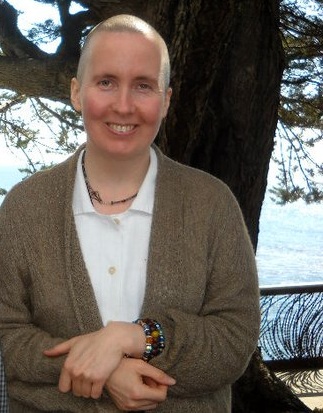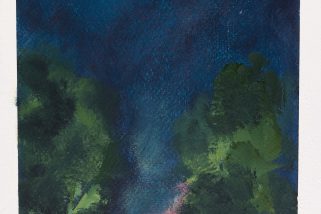
“Indra’s Net” by Ji Hyang Padma
In Zen, one image we use to describe our interdependence with each other is Indra’s Net. Imagine a net: its horizontal threads representing time, the vertical threads representing space. Where each of these threads meet, there is a crystal which is reflecting, not only every other crystal, but every reflection of every other crystal. In this way, we are intricately connected to each other: we are composed of reflections of each other.
This was vividly brought home to me on one ordinary day. On that particular day, I had a clear sense of making connections—the kind driven by a tight schedule. Leaving the house to catch the 7 am bus from Kendall Square, Cambridge to Wellesley College. Arriving at 8 am at Wellesley, preparing program materials and making the delivery, catching the 9 am bus– and arriving in Kendall Square at 10 am, right on schedule. Now I was right where I needed to be, to catch the subway downtown, for a stress reduction class I’ll teach at lunchtime, in the Financial District.
This is where the universe provides a new lesson.
Stepping out of the subway train, I momentarily look down, adjusting the two bags I am carrying, and the box of Xeroxes. Rebalancing. In that moment, I hear something, a brief chorus of sound. As I look up, I see someone has fallen backward on the escalator. The man is, in fact, still falling, head first: his head bumps each steel step– with each lurch downward, my stomach jumps. This moment seems expanded, as if time has stopped. His falling down the “up” escalator seems to defy laws of gravity. At that moment, for a moment, I pause. There is a man up the escalator, near his pants, who is stopping his fall by grabbing his leg. To my side, there are a bevy of passers-by who have decided it is a good day to take the elevator. In that moment, the illusion of a neatly constructed agenda hovers– and disappears.
This is the connection I need to make.
Even as I run up the escalator, a second man is struggling to pull him to his feet– or at least away from the teeth of the stairs. I lean, and push from behind; as the man’s form caves backward, I see a place to give a focused push, the kind learned in volleyball. The second man catches his body, anchors it forward– and the man finds his feet. We arrive at the top of the escalator.
I checked in with him “Are you okay?”
Yes, he was.
A woman said, “You hit your head.”
That’s okay, I don’t keep much in it.
He was, no doubt, ready for a chiropractic appointment the next day, but no other injury occurred. This wake- up call had helped me step out of my own way, see the connection, and respond. At the end I felt more alive, and more authentic, more myself. So, did I help him, or did I help myself?
Is there a difference?
This material was reproduced by permission of Quest Books, the imprint of the Theosophical Publishing House (www.questbooks.net) from Living the Season: Zen Practice for Transformative Times by Ji Hyang Padma. © 2013 by Ji Hyang Padma
____________________
Share your response to this work, in any form, here

Ji Hyang Padma Artist Statement:
Ji Hyang Padma, Ph.D. has combined an academic career with her vocation as a spiritual
teacher. Ji Hyang currently serves as Director of the Comparative Religion & Philosophy
Program at the California Institute for Human Science; she also teaches at Omega Institute.
Ji Hyang has done intensive Zen training and teaching in Asia and North America for 20
years, and served as Buddhist chaplain at Wellesley College for over ten years. She has a
doctorate in Psychology, with a research focus on narratives of traditional healers.
Ji Hyang’s recent writing has been published in Our Neighbor’s Faith: Stories of Interfaith
Encounters and Arts of Contemplative Care: Pioneering Voices in Buddhist Chaplaincy and Pastoral
Work. Her book Zen Practices for Transformative Times, was released by Quest Books in 2013.






